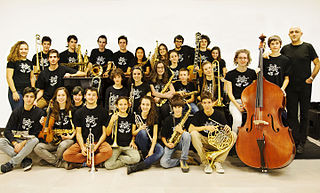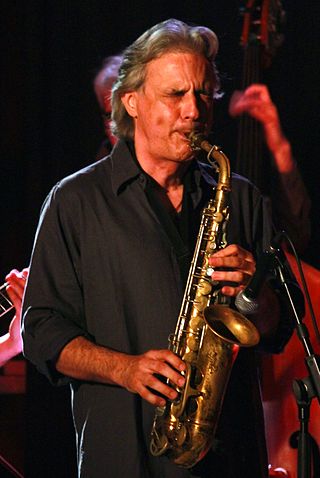
Vicenç Montoliu i Massana, better known as Tete Montoliu was a Spanish jazz pianist from Catalonia, Spain. Born blind, he learnt braille music at age seven. His styles varied from hard bop, through afro-Cuban, world fusion, to post bop. He recorded with Lionel Hampton in 1956 and played with saxophonist Roland Kirk in 1963. He also worked with leading American jazz musicians who toured in, or relocated to Europe including Kenny Dorham, Dexter Gordon, Ben Webster, Lucky Thompson, and Anthony Braxton. Tete Montoliu recorded two albums in the US, and recorded for Enja, SteepleChase Records, and Soul Note in Europe.

Armando Anthony "Chick" Corea was an American jazz pianist, composer, bandleader and occasional percussionist. His compositions "Spain", "500 Miles High", "La Fiesta", "Armando's Rhumba" and "Windows" are widely considered jazz standards. As a member of Miles Davis's band in the late 1960s, he participated in the birth of jazz fusion. In the 1970s he formed Return to Forever. Along with McCoy Tyner, Herbie Hancock and Keith Jarrett, Corea is considered to have been one of the foremost pianists of the post-John Coltrane era.
"Spain" is an instrumental jazz fusion composition by jazz pianist and composer Chick Corea. It is likely Corea's most recognized piece, and is considered a jazz standard.

Carles Benavent is a Catalan flamenco and jazz bass player.

Mayte Martín is a flamenco cantaora (singer), bolero singer, and composer.

Gerardo Núñez Díaz is a Spanish guitarist and composer. His roots are in flamenco but he has played fusion and jazz.

Chano Domínguez is a Spanish Latin jazz, post bop and flamenco pianist. Dominguez has released over 20 albums as a bandleader, and collaborated extensively with other jazz artists including Paquito D’Rivera, Gonzalo Rubalcaba, Joe Lovano, Chucho Valdés, Martiro, and Wynton Marsalis and the Lincoln Center Jazz Orchestra, He performs his own original compositions, as well as the music of Harold Arlen, Thelonious Monk, Miles Davis, and the Spanish classical composer Joaquín Rodrigo. He was nominated for a Grammy Award in 2012 for his album Flamenco Sketches on the Blue Note label.
Fresh Sound, or Fresh Sound New Talent, is a jazz record label established in Barcelona, Spain, by Jordi Pujol. The label was initially founded as a reissue label.

Jorge Pardo is a Spanish flautist and saxophonist born 1 December 1956 in Madrid, known for the albums he released for Milestone Records in the 1990s. He has been a side musician of famous flamenco guitarist Paco de Lucia and also with American jazz legend Chick Corea. He occasionally joins the Al andalus ensemble for performances.

This is a timeline documenting events of Jazz in the year 1974.

This is a timeline documenting events of Jazz in the year 1978.

La Florida is a park in Vitoria-Gasteiz, Álava, Spain. It was built between 1820 and 1855 in neoclassical style by the architects Angel Chavez, Juan De Velasco, Ramón Ortés De Velasco and Manuel Arana. The birth of Florida is dated 1820 when they built the existing ring that surrounds the music kiosk. For the actual 32,454 square meters land used the former convent of Santa Clara, and as much as planners have insisted later, there is nothing similar in the new green spaces in Vitoria.

Jorge "Jordi" Rossy is a spanish jazz drummer, pianist and vibraphonist.

The Vitoria-Gasteiz Jazz Festival has been celebrated annually in July since 1977, in Vitoria-Gasteiz, Spain.

Jazzaldia, more commonly known as the San Sebastian Jazz Festival, is a jazz festival in San Sebastian, Spain, held every year during the third week of July, and lasting for five days.

Sant Andreu Jazz Band is a youth jazz band from Barcelona, featuring 7- to 20-year-olds. The bandleader is Joan Chamorro.

Perico Sambeat is a Spanish jazz saxophonist. He is an instructor at Berklee's campus in Valencia, Spain.

In the 2010s in jazz, there was a noted resurgence in the popularity of jazz, particularly in the United Kingdom, where new artists rose to prominence such as Sons of Kemet, Shabaka Hutchings, Ezra Collective, and Moses Boyd Young audiences overall also listened jazz moreso than before, with streaming services reporting a spike amongst people under 30. Part of this is attributed to the rise of streaming services, and part to fusions with other genres and collaborations between jazz musicians and popular artists in other genres, such as Kamasi Washington's work with Kendrick Lamar

Ademuz is an album by jazz saxophonist and flautist Perico Sambeat.
Mario Rossy is a jazz bassist, composer, and educator.

















